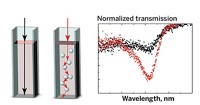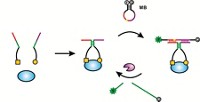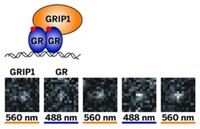Advertisement
Grab your lab coat. Let's get started
Welcome!
Welcome!
Create an account below to get 6 C&EN articles per month, receive newsletters and more - all free.
It seems this is your first time logging in online. Please enter the following information to continue.
As an ACS member you automatically get access to this site. All we need is few more details to create your reading experience.
Not you? Sign in with a different account.
Not you? Sign in with a different account.
ERROR 1
ERROR 1
ERROR 2
ERROR 2
ERROR 2
ERROR 2
ERROR 2
Password and Confirm password must match.
If you have an ACS member number, please enter it here so we can link this account to your membership. (optional)
ERROR 2
ACS values your privacy. By submitting your information, you are gaining access to C&EN and subscribing to our weekly newsletter. We use the information you provide to make your reading experience better, and we will never sell your data to third party members.
Analytical Chemistry
Spotting A Single Strand
Analytical Biochemistry: A portable device detects nucleic acids simply
by Erika Gebel
November 4, 2011

Common techniques for identifying and measuring DNA or RNA require purification, labeling, or other cumbersome preparations. But a new method pumps samples through a tiny capillary tube and needs no such pretreatment (Anal. Chem., DOI: 10.1021/ac202480w). The ability to analyze samples directly makes the portable device ideal for use in remote locations or in healthcare facilities without the equipment necessary for the standard methods, says Ron Naaman of the Weizmann Institute of Science.
Naaman and colleagues coated the inside of a capillary tube, just 0.3 mm in diameter, with probes that they designed to bind specific single-stranded DNA or RNA molecules. The researchers tested the device by flowing aqueous samples of the biomolecules through the probe-laden tubes. The researchers then elongated the molecules that stuck to the probes by adding either DNA polymerase or reverse transcriptase, depending on whether the probe targeted DNA or RNA, respectively. The enzymes incorporated fluorescently labeled nucleotides into the strand during elongation.
Pictures taken with a fluorescence microscope camera revealed glowing spots on the tube in places where probes had snagged a nucleic acid. The researchers also could detect multiple targets simultaneously by using a tube with one section containing a probe for DNA and another with a probe for RNA. When testing a sample with just one of the nucleic acids, only half the tube glowed, but when the sample contained both, the entire tube lit up.
Using the intensity of the fluorescence, the researchers calculated concentrations and found they could detect even a single molecule, says Naaman. The thinness of the tube is the key to the device’s sensitivity, he explains, because the sample’s biomolecules collide so many times with the surface that the probes are sure to latch onto every one of the targeted nucleic acids.





Join the conversation
Contact the reporter
Submit a Letter to the Editor for publication
Engage with us on Twitter